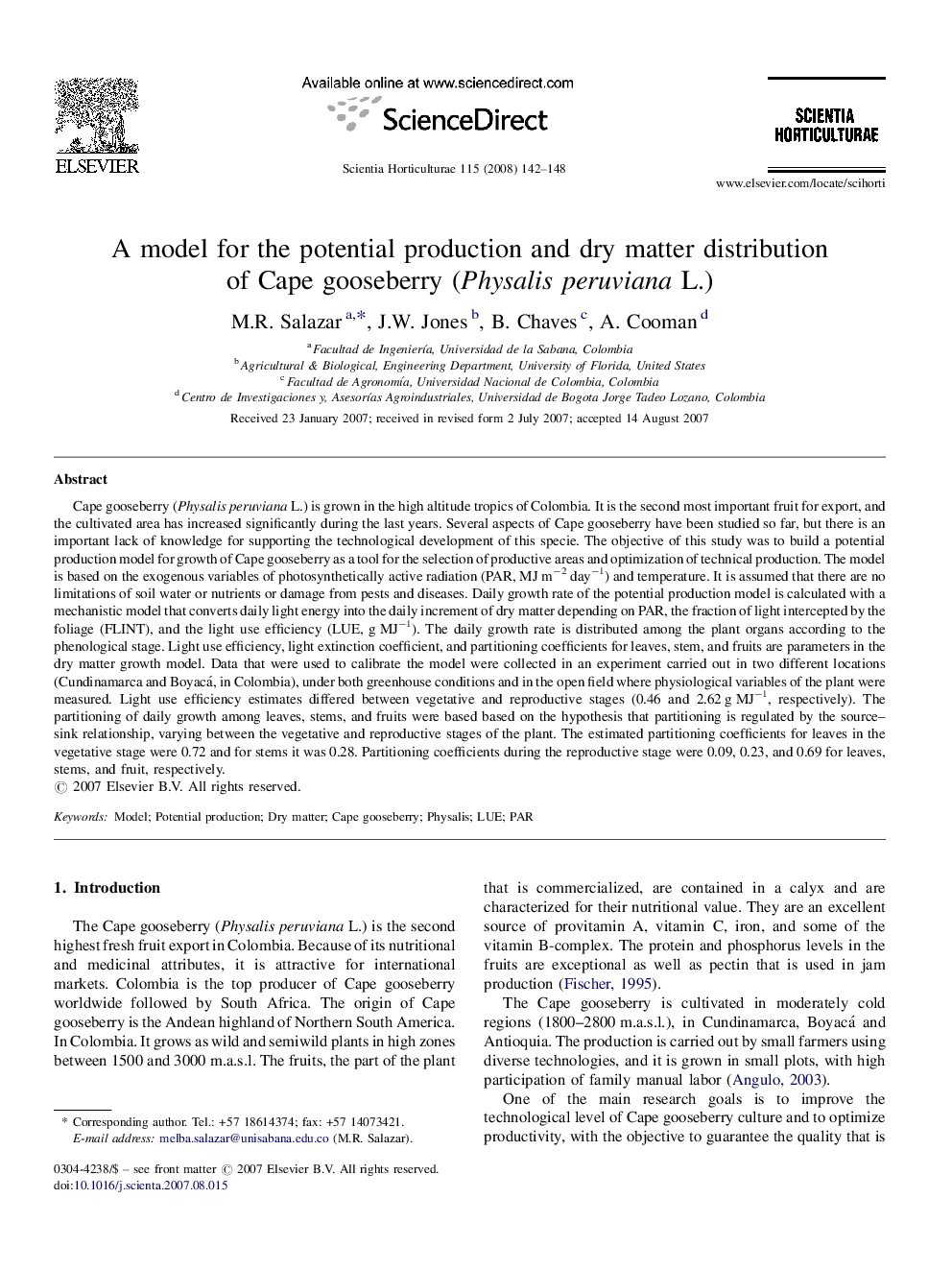| Article ID | Journal | Published Year | Pages | File Type |
|---|---|---|---|---|
| 4569501 | Scientia Horticulturae | 2008 | 7 Pages |
Cape gooseberry (Physalis peruviana L.) is grown in the high altitude tropics of Colombia. It is the second most important fruit for export, and the cultivated area has increased significantly during the last years. Several aspects of Cape gooseberry have been studied so far, but there is an important lack of knowledge for supporting the technological development of this specie. The objective of this study was to build a potential production model for growth of Cape gooseberry as a tool for the selection of productive areas and optimization of technical production. The model is based on the exogenous variables of photosynthetically active radiation (PAR, MJ m−2 day−1) and temperature. It is assumed that there are no limitations of soil water or nutrients or damage from pests and diseases. Daily growth rate of the potential production model is calculated with a mechanistic model that converts daily light energy into the daily increment of dry matter depending on PAR, the fraction of light intercepted by the foliage (FLINT), and the light use efficiency (LUE, g MJ−1). The daily growth rate is distributed among the plant organs according to the phenological stage. Light use efficiency, light extinction coefficient, and partitioning coefficients for leaves, stem, and fruits are parameters in the dry matter growth model. Data that were used to calibrate the model were collected in an experiment carried out in two different locations (Cundinamarca and Boyacá, in Colombia), under both greenhouse conditions and in the open field where physiological variables of the plant were measured. Light use efficiency estimates differed between vegetative and reproductive stages (0.46 and 2.62 g MJ−1, respectively). The partitioning of daily growth among leaves, stems, and fruits were based based on the hypothesis that partitioning is regulated by the source–sink relationship, varying between the vegetative and reproductive stages of the plant. The estimated partitioning coefficients for leaves in the vegetative stage were 0.72 and for stems it was 0.28. Partitioning coefficients during the reproductive stage were 0.09, 0.23, and 0.69 for leaves, stems, and fruit, respectively.
